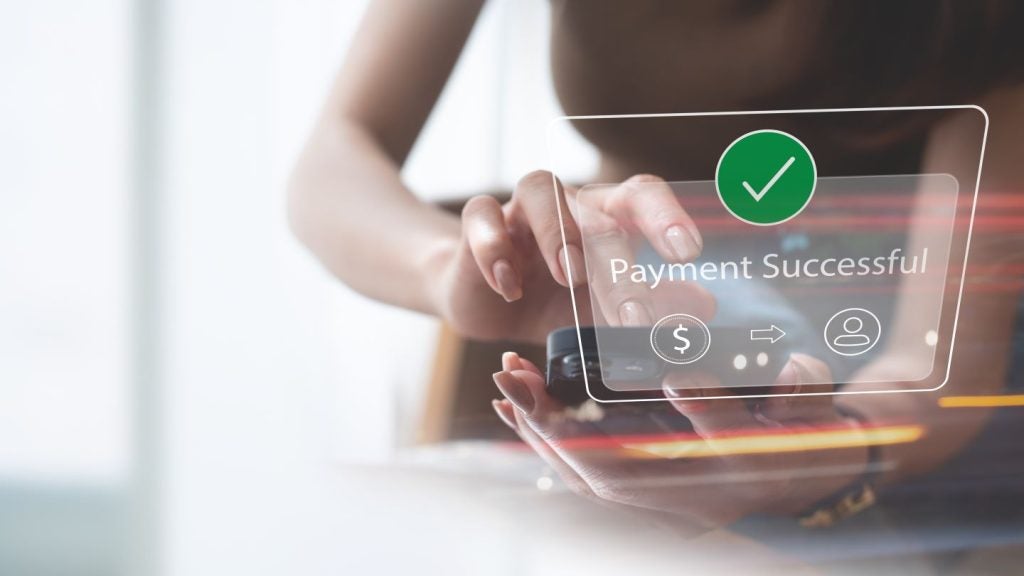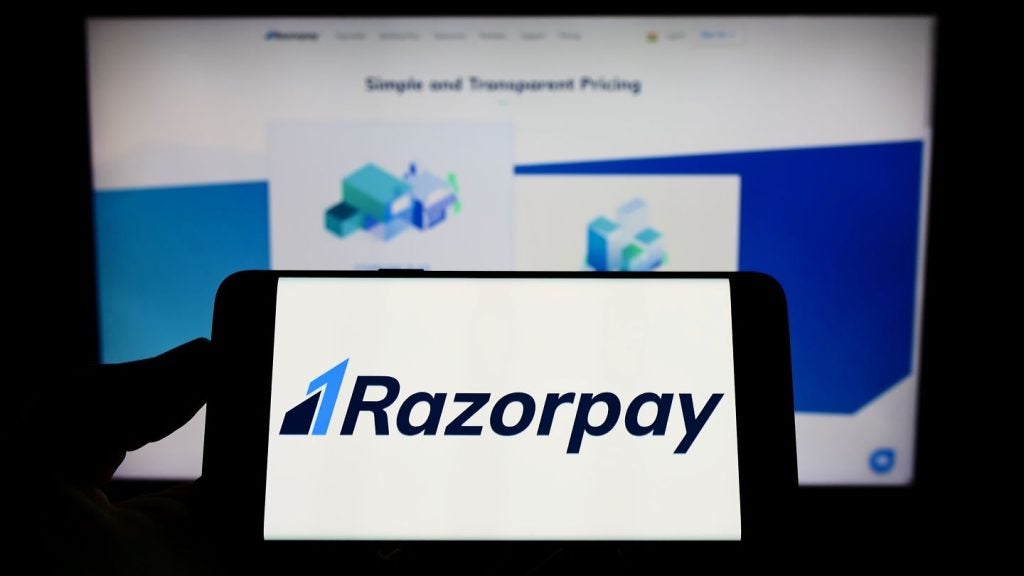Exploring Online Payments Technology Trends
With the emergence of new technologies transforming the payments industry, long-established companies are investing heavily in new solutions through mergers and acquisitions (M&A) to ensure they maintain their market share and can compete with the fintech startups that are disrupting the sector.
Listed below are the key technology trends impacting the online payments theme, as identified by GlobalData.
Biometrics
Biometric technologies represent a set of solutions that can help improve online payment security while reducing friction layers during the payment process. Biometric identifiers such as fingerprints, facial recognition, and voice recognition are difficult to replicate by online criminals, which should help reduce the amount of online fraud compared with password-based security.
In addition, the integration of biometric solutions by online payment companies is useful in ensuring compliance with Payment Services Directive Two (PSD2) Strong Customer Authentication (SCA) requirements, as this will enable multi-factor authentication through biometrics in addition to passwords.
Blockchain
Blockchain technology has transformative potential for payments processing in general, and these benefits are directly correlated to online payments. The technology involves the creation of a digital ledger that is updated in real time and shared between all participants in the system. This allows for a high degree of trust since all transactions are publicly known and verifiable by any participant.
These systems are also faster and cheaper to send transactions on than traditional payment systems since they just update the “ledger” electronically. These benefits point to a potential back-end payment system that could rival and ultimately replace or complement much of the infrastructure that electronic payments are currently built on.

US Tariffs are shifting - will you react or anticipate?
Don’t let policy changes catch you off guard. Stay proactive with real-time data and expert analysis.
By GlobalDataWe are seeing early adoption of blockchain in some regions and by some companies. For instance, JPMorgan Chase introduced its own stablecoin called JPM Coin to execute real-time payment transactions on its network. In 2020, Switzerland passed a Blockchain Act to support investments and the development of blockchain technology in the country.
Buy Now Pay Later (BNPL)
Another payment method that is becoming popular apart from digital wallets, especially among young consumers, is BNPL. BNPL has seen rapid growth in recent years, and this trend was accelerated due to the Covid-19 pandemic. BNPL is positioned as a cheaper alternative to credit cards, as it enables consumers to make payments in multiple installments without fee or interest. BNPL was introduced and made popular by fintechs, including PayPal, Affirm, and Klarna.
Many companies like Amazon and JPMorgan Chase are introducing BNPL services. BNPL providers are using social media and online influencers to market their services to attract the younger generation. However, the rapidly growing payment sector is largely unregulated. Reports of complaints and fears of consumers accumulating debt they cannot manage are likely to force countries to pass regulation that restricts BNPL lending practices and advertising.
Central Bank Digital Currencies (CBDCs)
There is growing interest among many governments in developing their own digital currencies. This is mainly motivated by the drive for financial inclusion, the possibility of eliminating cash, as well as the need to create an alternative to cryptocurrencies and stablecoins. CBDCs have the potential to facilitate financial inclusion through smartphone-based payment and banking services for unbanked populations, especially in developing countries where smartphone penetration is higher than card penetration.
In October 2020, the Central Bank of The Bahamas introduced the Sand Dollar, which was the first digital currency launched by a government. China is conducting live testing of the Digital Yuan in selected cities. Sweden, on the other hand, is planning to go cashless by 2023 and recently completed the first phase of its e-krona test pilot.
Cryptocurrency
Cryptocurrencies are the most well-known use case for blockchain technology. While most would associate cryptocurrencies purely with Bitcoin, there are over 9,000 cryptocurrencies. These include stablecoins, privacy coins, utility tokens, security tokens, and more, all with different functions and characteristics. For example, Ethereum is the main platform for decentralised finance applications and non-fungible tokens.
Since 2020, crypto has attracted a lot of attention, mainly due to the sudden surge Bitcoin experienced during the lockdown. Retail consumers see it as an opportunity to earn money, which the likes of Visa and PayPal have capitalised on by allowing consumers to either trade or store cryptocurrencies on their platforms. Financial institutions like Goldman Sachs are also looking to launch a crypto-related exchange-traded fund that will give investors exposure to cryptocurrency companies.
Data analytics
Payment companies are well aware of the potential power of leveraging customer data. Data governance, security, and access to data are all critical issues for financial services companies, with these areas being a regulatory focus as well as a matter of practical strategy in the face of fraud and cyberattacks.
As in other industries, customer data held by financial services and payment providers allows for tailored advertising and customer profiling. In the arena of online payments specifically, targeted ads, offers, and push notifications can all be funnelled to the same device that is actually making the payment to present offers in real time.
Digital wallet
The growing adoption of digital wallets has been driven by the omnipresence of smartphones. For example, Apple, Google, and Samsung have all equipped their smartphones and tablets with digital wallets. The pandemic has further accelerated the adoption of digital wallets as consumers favoured convenient contactless solutions as a ‘safe’ alternative to cash payments, which are steadily declining.
Digital wallets are convenient for online payments as they store consumers’ debit and credit cards, thus streamlining the transaction process. They constitute an indirect threat to card payments since they can be linked to users’ accounts, enabling application-to-application (A2A) and peer-to-peer (P2P) transfers using real-time payments (RTPs) rails or even blockchain systems for back-end processing. This makes payment transactions more efficient and more cost-effective for merchants.
Machine Learning (ML)
ML is one of the seven artificial intelligence (AI) technologies, and is largely being leveraged in payments in order to improve fraud detection and prevention. This is the most immediately applicable use case for the technology and helps to address the trade-off of customer convenience versus data security that has historically defined fraud management.
These technologies allow for authentication based on dynamic recognition of consumer usage patterns, rather than requiring inconvenient manual authentication, making the transaction more secure and speeding it up by authenticating it ‘passively’ from a consumer perspective.
Real-time Payments (RTP)
RTP allows for transactions to be made between bank accounts in real time, offering a faster and cheaper method of payment settlement compared to card-based payments. These services can be used to settle transactions between consumers or businesses; they are most commonly employed for P2P payments and bill payments. Most RTP systems are limited to domestic transactions, implying they cannot fully supplant international card schemes despite beating them in speed and cost with most transactions.
However, these schemes are now reaching across geographic borders, most notably in the European Union (EU) through the TARGET Instant Payment Settlement (TIPS) scheme built on the SEPA Instant Credit Transfer framework. In Asia Pacific, a group of countries are developing their own regional scheme. In 2021, the Bank of Thailand and the Monetary Authority of Singapore linked their respective RTP systems, Thailand’s PromptPay and Singapore’s PayNow, enabling consumers to make transfers between both countries.
Tokenisation
Tokenisation allows for card details stored on digital wallets to be replaced by a one-use ‘token’ at payment, thus preventing consumer data from becoming exposed to fraudsters when making transactions. This technology is now the industry standard for digital wallets.
The widespread use of this technology has had two major effects on the market. Firstly, it has brought wallet providers such as Apple and Google under the purview of payments regulators. Secondly, sensitive data is concentrated in the hands of wallet holders. This makes the chain more secure overall but creates a single point of vulnerability, which if compromised, would be disastrous for wallet providers, customers, and perceptions about online and mobile payments.
5G
5G is slowly being rolled out in different countries, with mobile manufacturers such as Apple and Huawei already making some of their smartphones 5G-ready. But it could take until 2025 for 5G to be globally available. Once it does become readily available, 5G mobile technology is expected to improve on 4G data speed threefold.
This jump in speed will make mobile payments quicker to initiate and process, generally enhancing customers’ m-commerce experience and reducing convenience-related pain points that can lead to cart abandonment.
This is an edited extract from the Online Payments – Thematic Research report produced by GlobalData Thematic Research.







